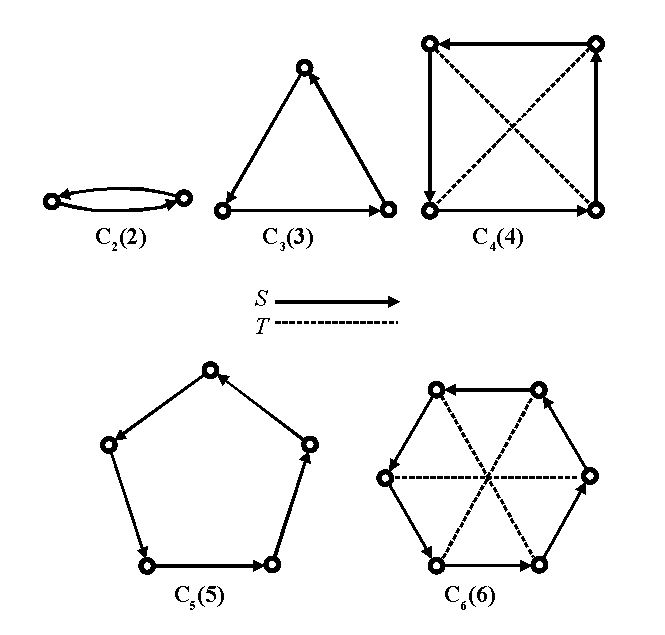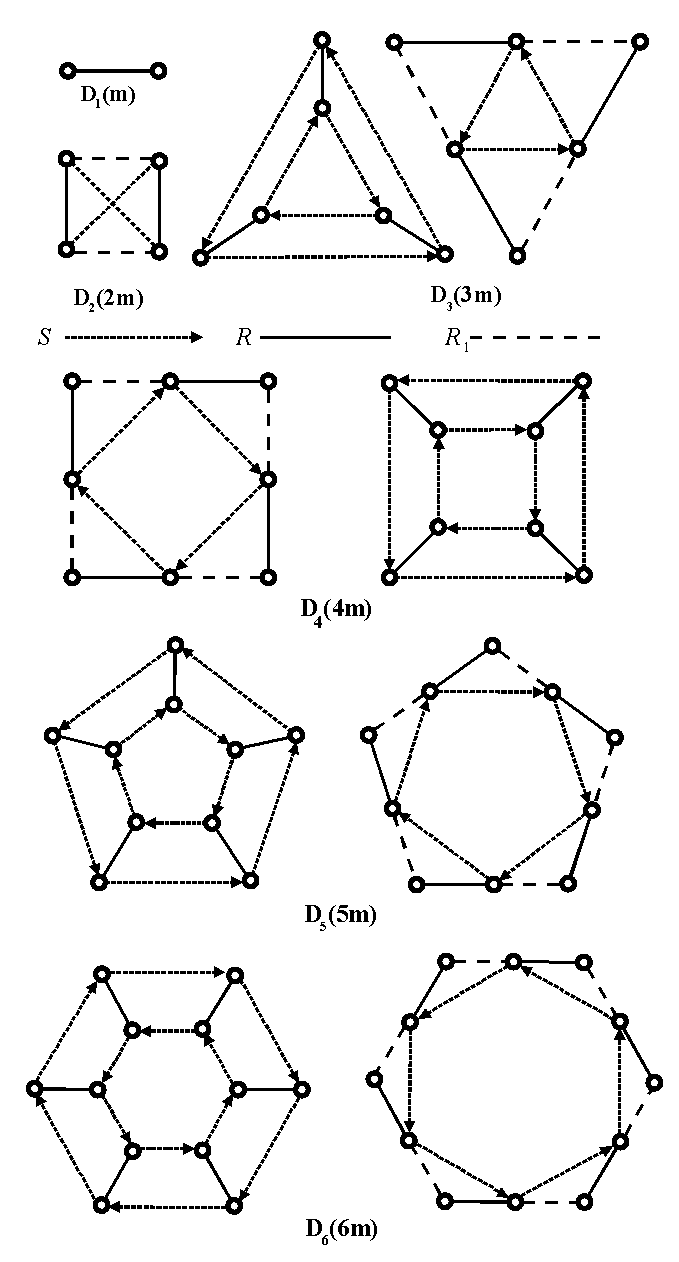Cn (n)
Presentation: {S} Sn = E
Order: n (n Î N)
Structure: Cn
Reducibility: If n = km, with (k,m) = 1,
then Cn = Ck×Cm;
if n = p, with p - a prime number, then Cn is
irreducible.
Form of the fundamental region: unbounded, allows variation of the
shape of its boundaries.
Enantiomorphism: enantiomorphic modifications exist.
Polarity of rotations: rotations are polar.
Presentations: {S,R} Sn = R2 = (SR)2 = E
{R,R1} R2 = R12 = (RR1)n = E (R1 = RS)
Order: 2n (n Î N)
Structure: Dn
Reducibility: If n = 4m+2, then
Dn = C2×D2m+1 = {S2m+1} ×{S2,R} =
Form of the fundamental region: unbounded, of a fixed shape, with
rectilinear boundaries.
Enantiomorphism: there are no enantiomorphic modifications.
Polarity of rotations: rotations are non-polar.
Enantiomorphism: there are no enantiomorphic modifications.
Polarity of rotations: rotations are non-polar.
The above survey of characteristics of the groups
Cn (n) and Dn (nm) is based on
I. Grossman, W. Magnus (1964), W. Magnus, A. Karras, S. Solitar
(1966), L.C. Biedenharn, W. Brouver, W.T. Sharp (1968),
A.V. Shubnikov, V.A. Koptsik (1974), H.S.M. Coxeter, W.O.J. Moser
(1980).
Cayley diagrams (Figure 2.1):
Cayley diagrams.
Dn
(nm)
= {Z} ×{S2,R}; in other
cases Dn is irreducible.
D¥
(¥m)
Group-subgroup relations: [Dn:Cn] = 2 [
Dkm:Dm] = k
(in particular
[D2m:D2] = m)
[Ckm:Cm] = k
(in particular [C2m:C2] = m)


NEXT
CONTENTS
